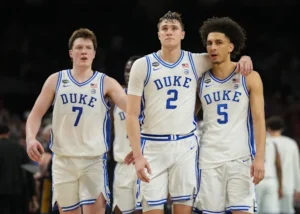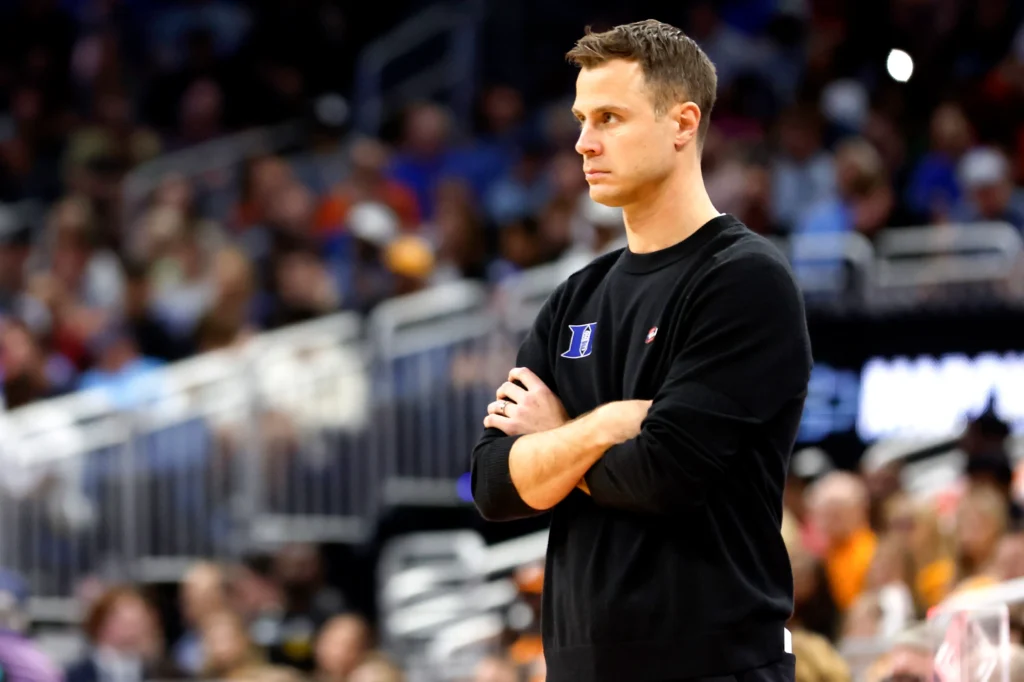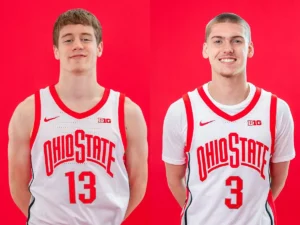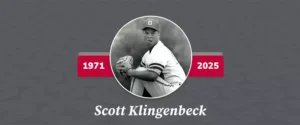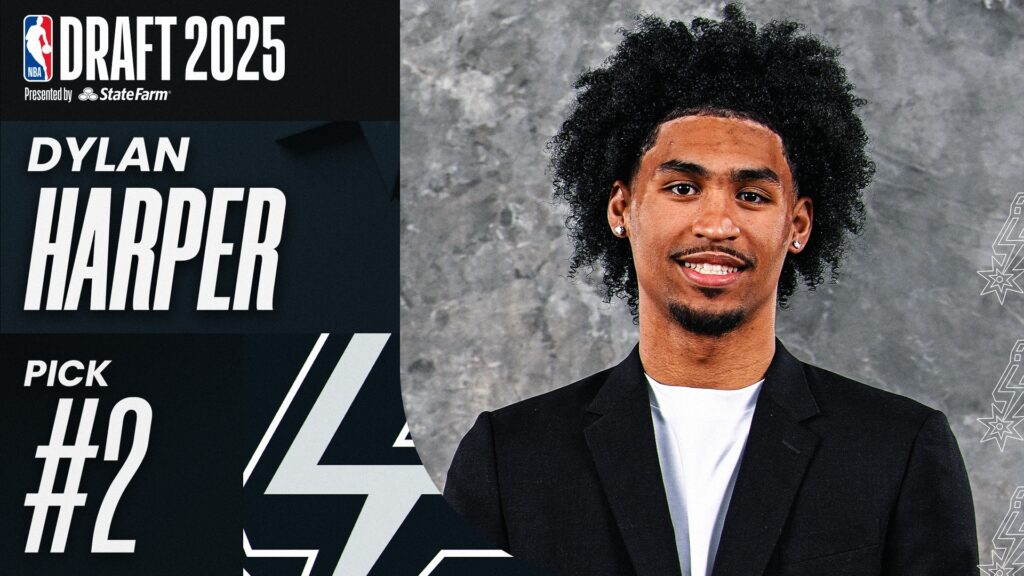
In a decision that could shape the future of their franchise for years to come, the San Antonio Spurs selected Dylan Harper with the No. 2 overall pick in the 2025 NBA Draft. The move adds another dynamic young talent to a team already building around 2023 No. 1 pick and generational talent Victor Wembanyama. With Harper, the Spurs are investing in a guard who blends skill, poise, and leadership at a level rarely seen from players his age. The selection not only solidifies the Spurs’ intent to return to the NBA’s elite tier but also reaffirms their commitment to assembling a roster rooted in intelligent, unselfish, and fundamentally sound basketball.
Dylan Harper’s rise to this moment has been defined by consistency, basketball IQ, and an unwavering calm under pressure. The 6’5” left-handed guard from Don Bosco Prep in New Jersey—and later Rutgers University—has long been regarded as one of the most complete guards in his class. Coming from a basketball family, with his father Ron Harper having won multiple NBA championships, Dylan entered the basketball world with high expectations and exceeded most of them by the time his freshman season in college concluded. He has been praised for his steady demeanor, polished offensive skill set, and strong defensive instincts, all of which made him an ideal fit for the Spurs’ system.
San Antonio’s interest in Harper was no surprise to those who followed the franchise closely over the past year. The team has been in search of a dynamic backcourt player to pair with Wembanyama, someone capable of handling playmaking duties while also providing a scoring threat. Harper fits that mold perfectly. Known for his ability to control the tempo of the game, make reads off the pick-and-roll, and finish through contact, Harper projects as an NBA-ready guard who can step into the rotation immediately. His maturity and court vision are particularly impressive for a player his age, and the Spurs’ player development program is widely seen as one of the best environments for him to thrive.
Dylan Harper’s freshman season at Rutgers gave the basketball world a glimpse of what he can bring to the NBA. Averaging over 17 points, 6 assists, and 5 rebounds per game, he demonstrated his versatility on both ends of the floor. Unlike many high-scoring guards, Harper doesn’t rely solely on athleticism. Instead, he’s methodical, patient, and makes decisions with the precision of a veteran. Whether it was threading a bounce pass through a tight window or using his body to shield off defenders near the rim, Harper played with the kind of control rarely seen in young prospects. His left-handed stroke is smooth, and while his three-point shot is still improving, the mechanics and touch suggest it will become a reliable weapon in time.
From a fit perspective, the Spurs couldn’t have asked for a better pairing. Harper’s unselfish nature, willingness to move the ball, and commitment to defense align perfectly with the Spurs’ longstanding values. Under head coach Gregg Popovich—assuming he continues to guide the franchise or passes the torch to someone within the Spurs’ coaching tree—Harper will have every opportunity to blossom. The franchise has built a legacy around developing stars slowly and with purpose, ensuring they are well-rounded players by the time they are fully unleashed. With Wembanyama already showing flashes of dominance, adding a guard like Harper who can complement his inside-out game gives the Spurs a formidable young foundation.
The Harper-Wembanyama connection is one many around the league will be watching closely. Wembanyama, with his 7’4” frame and unique perimeter skills, thrives in pick-and-roll and pick-and-pop situations. Harper, one of the best pick-and-roll guards in the draft, has shown the ability to manipulate defenders, change pace, and deliver pinpoint passes to rolling bigs. Their games naturally complement one another. Where Wembanyama can stretch the floor or dominate inside, Harper can orchestrate from the perimeter, draw defenders, and open up lanes for teammates. This duo, if developed properly, could become one of the most potent young partnerships in the league.
Defensively, Harper brings a level of intensity and awareness that will quickly endear him to Spurs fans. At 6’5” with a solid frame and long arms, he can guard both backcourt positions and switch onto bigger wings when needed. His anticipation off the ball and willingness to fight through screens make him a reliable defender in both man-to-man and team defensive schemes. In an era where guards are often evaluated solely by their scoring, Harper’s two-way potential gives him a major edge. His defensive effort, combined with Wembanyama’s rim protection, lays the groundwork for a Spurs defense that could become elite in a few seasons.
For the Spurs, this pick also represents a shift in identity. Since the retirement of Tim Duncan and the end of the “Big Three” era, San Antonio has been searching for a new core to carry the franchise forward. The arrival of Wembanyama in 2023 marked the beginning of that process, and now with Harper joining the fold, the Spurs have two cornerstone players under 21 who could lead the team for the next decade. It’s a rare position for any NBA team to be in, and one that requires careful planning, patience, and the right infrastructure to succeed.
Off the court, Harper also fits the mold of what the Spurs look for in a player. Intelligent, soft-spoken, and dedicated to his craft, he brings the kind of humility and professionalism that has defined the Spurs’ locker room culture for decades. Much like Kawhi Leonard during his early years in San Antonio, Harper may not seek the spotlight, but he lets his game do the talking. His work ethic is well documented, and those close to him say he is often the first in the gym and the last to leave. That mindset, paired with the Spurs’ developmental program, could help Harper reach his considerable ceiling.
While some critics may have debated whether the Spurs should have pursued a more high-profile scorer or a more athletic prospect at No. 2, the choice of Harper reveals San Antonio’s desire for balance, stability, and a long-term vision. Rather than chasing flash, the Spurs chose substance. In Harper, they’ve secured a player who brings professionalism, maturity, and a well-rounded skill set. He’s not just a player who can score or defend—he’s a connector, a leader, and someone capable of influencing games in multiple ways.
The road ahead won’t be easy. The Western Conference remains brutally competitive, and the Spurs are still in the early stages of a rebuild. But with Harper and Wembanyama as the new faces of the franchise, San Antonio finally has the foundational pieces to return to relevance. The team’s front office, known for its patience and strategic planning, will likely continue building through the draft and selective trades, ensuring that Harper and Wembanyama have the right veterans and complementary pieces around them.
As the 2025 NBA season approaches, all eyes will be on how quickly Harper adjusts to the pace and physicality of the league. The expectations will be high, but the Spurs have never been an organization to rush development. Harper will be given time to grow into his role, to find his rhythm, and to learn under the guidance of one of the league’s most respected coaching staffs. If his college and pre-draft performances are any indication, it’s only a matter of time before he makes his mark.
The 2025 NBA Draft will be remembered for several high-profile selections, but the Spurs’ decision to draft Dylan Harper at No. 2 could prove to be the most pivotal. In an age of quick fixes and short-term thinking, San Antonio continues to play the long game—and Harper, with his blend of talent, maturity, and fit, may be the perfect player to lead that journey. For a franchise known for doing things the right way, Harper represents not just hope, but purpose. The Spurs’ rebuild has a direction now, and his name is Dylan Harper.
